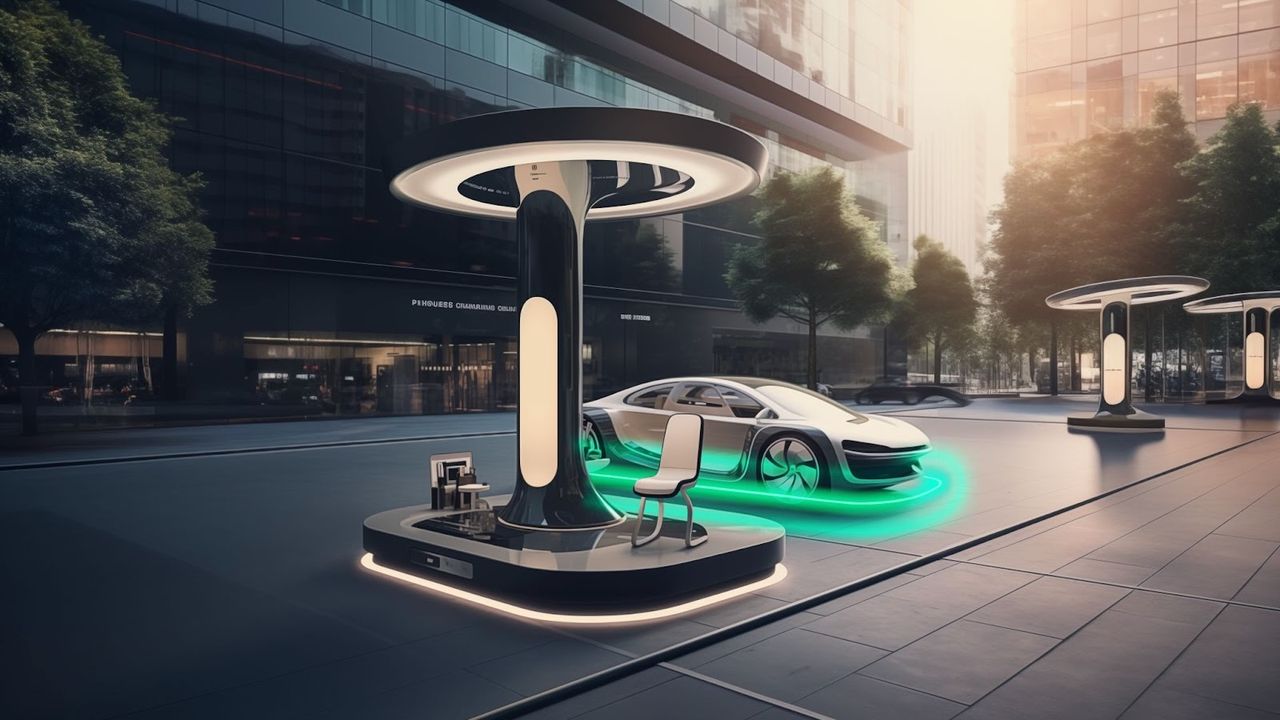The UK now boasts over 55,000 charging points across 31,445 locations—a remarkable 46% increase year-on-year.
However, achieving the country’s goal to phase out internal combustion engines by 2035 will require a monumental leap: at least 200,000 additional charging points, representing an increase of 363% from current numbers.
Despite this daunting target, progress is being made. Businesses, industries, and manufacturers are tirelessly installing both public and private charge points nationwide. But the most exciting aspect of this transformation lies in the advancements in charging technology.
As the adoption of electric vehicles (EVs) grows, it’s increasingly important to ensure a robust network of charging options at home, workplaces, and on the road.
Expanding this infrastructure will be key to easing the transition to EVs and encouraging more drivers to make the switch.
Could EVs Be Next to Adopt Wireless Charging?
The future of EV charging needs to be both fast and convenient. Wireless charging is an exciting development in this space, offering numerous benefits but also presenting unique challenges.
By eliminating the need for physical connectors, wireless charging simplifies the process, creating a seamless and user-friendly experience for EV owners.
This technology is versatile, with potential applications in home garages, public parking areas, and even dynamic charging lanes embedded in roads.
It can also reduce wear and tear on traditional plug-in connectors, improving reliability and lowering maintenance costs over time.
Researchers have been advancing wireless charging for years, and recent milestones are encouraging.
For instance, Oak Ridge National Laboratory recently achieved a new record by wirelessly charging an EV at 100 kW with 96% efficiency.
Challenges to Wireless Charging
However, hurdles remain. Wireless charging generally has lower efficiency compared to wired methods, alongside higher installation costs and challenges in standardisation.
Additional work is needed to optimise charging speeds and ensure compatibility across various vehicle models. Nonetheless, ongoing research and development promise to enhance the accessibility and practicality of wireless charging infrastructure in the future.

The Development of Urban Charging
Urban centres like London, Manchester, and Birmingham serve as bustling hubs for residents, tourists, and businesses alike.
In London alone, around 70% of people lack private parking spaces, underscoring the need for innovative urban charging solutions.
One notable advancement has been the rise of on-street charging. EV charging providers have prioritised integrating chargers into existing infrastructure in densely populated areas.
For example, lamppost chargers—introduced years ago—now make up 60% of on-street charging points. Such solutions improve the convenience and accessibility of EV charging for urban populations.
The Role of EVs in the UK’s Energy Network
Electric vehicles could also play a transformative role in the UK’s energy space.
According to National Grid’s Future Energy Scenarios, vehicle-to-grid (V2G) charging could provide up to 38GW of flexible power from 5.5 million EVs—enough to meet the UK’s highest projected peak energy demand in 2050.
As EV adoption grows, so will demand for electricity. This increased demand may create volatility in energy prices, but businesses could leverage V2G technology to optimise costs.
For instance, fleets could recharge during periods of low energy prices or when renewable energy supply is abundant, and even return power to the grid during peak demand.
Drax Electric Vehicles is already helping organisations across the UK transition to EVs while developing future-proofed electrification strategies.
By trialling technologies like V2G, businesses can go through how these solutions integrate with commercial energy systems to provide long-term benefits.
Scaling Bidirectional Charging
Although bidirectional charging exists, it has yet to reach the scale or affordability necessary for widespread adoption.
However, advancements in V2G technology are expected to drive down costs, making it more accessible in the near future. When that happens, organisations managing EV fleets will be in an excellent position to reap the rewards.
The future of EV charging is brimming with potential and innovation. Key areas of focus—urban charging networks, wireless solutions, and smart integration—are crucial for building a sustainable and efficient infrastructure.
Overcoming challenges and embracing these advancements will move us closer to a greener, more electric future.

